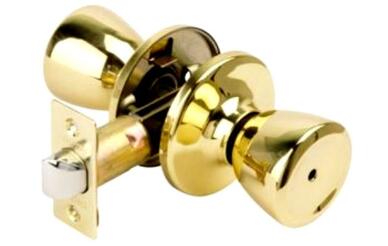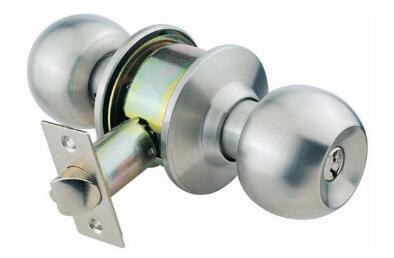The Difference Between Tubular and Cylindrical Door Locks
Tubular Locks
Tubular locks are a bored lockset. In the edge bore of these locks, a latch or bolt mechanism is installed. A tubular lock is also known by the names- radial lock, ace lock or a circle pin tumbler. Tubular locks have got their name from the shape of the keyway which is circular. The tubular locks have a basic ring-shaped hole and in the middle it has a solid metal cylinder. There are about seven or eight pins in the ring gap. In a tubular lock the key pins are moved horizontally. The lock has grooves cut into the outsides of the ring shape. There is a specific way in which the key has to be inserted in the lock.
The tubular locks provide light – medium duty. They have a smaller rose and come in market with decorative levers. However, they have limited cylinder options, cannot be used on thick doors and the chassis is not operational.
Applications– Often used for unattended commercial products. They are used in Bike locks, ATM’s, vending machines.

Cylindrical Locks
Cylindrical locks are also a bored lockset. In the cross bore of these locks, a latch or bolt mechanism is involved. The cylindrical locks are quick and easy to install. The mechanism of the lock uses a series of different length of pins. These pins follow the pattern of the key. The pins take the correct positions, such that the lock is released when the key is inserted into the lock.

What Is the Difference Between Tubular and Cylindrical Door Locks?
Tubular Door Locks: In a tubular lock, the mechanism for retracting the lock bolt is part of the latch assembly. The outside lock chassis has either a square or half-round extension which passes through this mechanism for actuation. In a tubular lock, the inside and outside spindles are joined by the extension through the latch and move in tandem after assembly.
Tubular Lock Major Components: In a cylindrical lock, the mechanism for retracting the latch bolt is part of the lock chassis. The latch is comparatively simple and connects to the outside lock chassis at the periphery. In a cylindrical lock, the inside and outside knob spindles are independent of each other. Because of the independent spindles and the larger mechanism for retracting the latch, cylindrical locks can be configured for many lock functions, such as storeroom, classroom, etc. In addition, levers can be clutched, i.e., the outside lever rotates without retracting the latch.
Cylindrical locks have larger rosettes and mounting plates. The components are made of thicker steel. They have an inside and outside bushing which requires that the mating spindles are made with more precision to ensure they are round. Cylindrical locks can be configured to more lock functions than tubular locks. These functions, such as storeroom locks, are more often required in commercial settings. Because of the larger, stronger components, especially the latch retraction mechanism, the cylindrical locks hold up to more wear and tear than tubular locks. Because the outside chassis contains the retraction mechanism, which is then covered with a cylindrical protective sleeve, it is easier to achieve a UL fire rating, which is important in commercial applications.
评论
发表评论